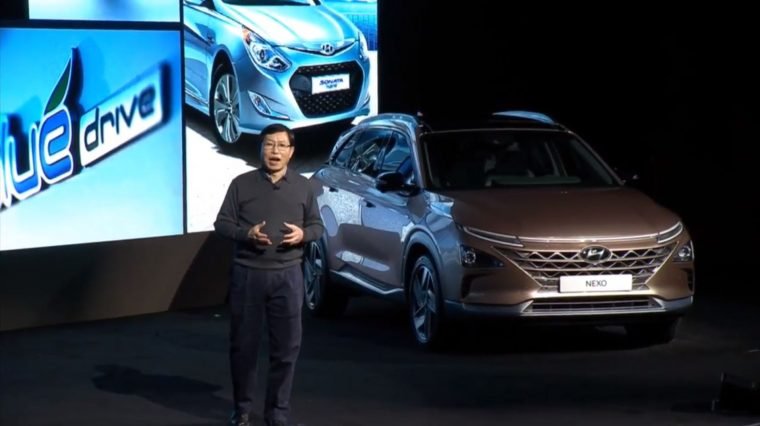Hyundai Nexo fuel-cell vehicle is what's next in automaker's 'Hydrogen Life Vision'

Built on a dedicated platform instead of using a converted ICE architecture, as the Tucson did, the Nexo packs a lighter, more compact hydrogen powertrain and a more powerful electric motor to deliver improved performance everywhere. The Nexo also plays a key role in Hyundai's "Hydrogen Life Vision," which aims at integrating hydrogen as a home energy source.
The power density of the Nexo's stack increases by 50 percent, and overall system efficiency goes up 5.1 percent. The smaller engine contains fewer moving parts, and even the hydrogen tanks are 36 pounds lighter than those in the Tucson FCEV.
The Tucson FCEV uses a 100-kW electric motor that provides 221-pound-feet of torque, and after the 90-second preparation and stack heating time on startup, the Tucson accelerates from zero to 60 miles per hour in 12.5 seconds. The Tucson's two storage tanks held 140 liters of hydrogen (37 gallons) that could provide about 295 miles of range and an EPA rating of 50 mpge. The Nexo uses a 120-kW motor with 291 lb-ft, is ready to go in 30 seconds after starting, and accelerates to 60 mph in 9.9 seconds. The new FCEV's three storage tanks hold 156 liters of hydrogen (42 gallons), which Hyundai says are good for more than 350 miles on the EPA test cycle. In a real-world run from Los Angeles to Las Vegas, Hyundai said the Nexo returned a 360-mile range and 57 mpge. Refilling the 700-bar system will take five minutes.
The Nexo will introduce some of the carmaker's new technology, too. Lane Following Assist keeps the Nexo in the center of its lane in the city and on the highway, and recognizes road edges when lane markings aren't clear. Blind-spot View Monitor displays an image of either side of the vehicle when the driver plans to change lanes. The Nexo parks itself autonomously, and returns, with Remote Smart Parking Assistant
Hyundai envisions owners of this second-generation FCEV beginning to use the Nexo as an integral part of their lives, not merely as an appliance. At the Consumer Electronics Show, Hyundai will have the Nexo hooked up and providing power to a demo household as part of the automaker's "Hydrogen Life Vision." The carmaker's also got plans for using the Nexo's "pure water to grow vegetation" (water and water vapor are the only emissions byproduct of FCEVs). While at CES we'll check whether Hyundai's using Nexo elixir to tend to any recreational hydroponics, but admittedly, that setup might be a little further down the hydrogen highway than we are at present. The Nexo will be available in select markets later this year.
Related News


